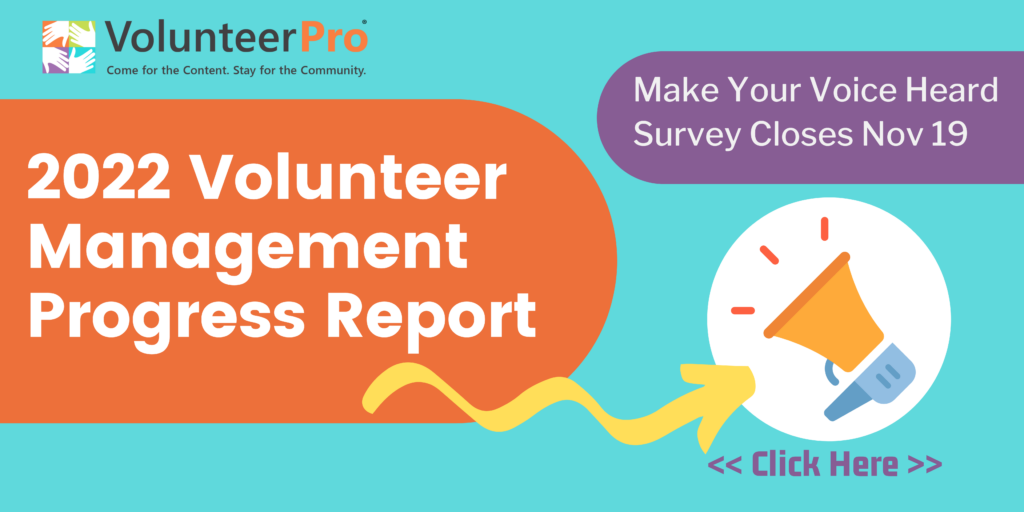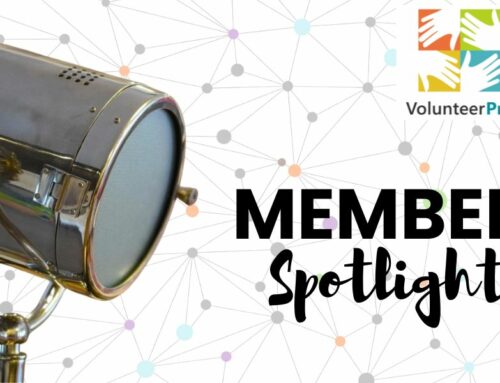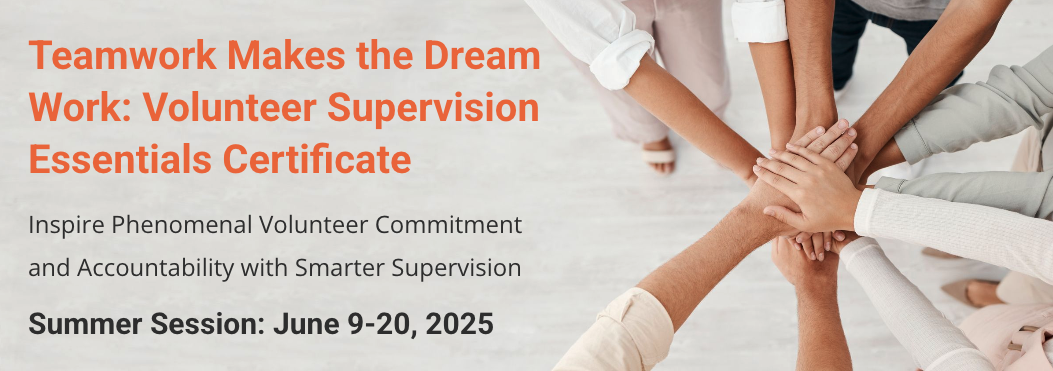How to Build Better Nonprofit Partnerships
If the thought of building nonprofit partnerships in your community leaves you in a cold sweat, you’re not alone. For some of us, the idea of cold calling complete strangers — however beneficial they may be to our efforts — ties our stomachs in knots. I’m one of those people.
One of my first real jobs out of grad school was a position as Regional Outreach Coordinator for a six-state region in the US midwest. I’m not sure quite how I got the job. I certainly wasn’t overly qualified, but perhaps my enthusiasm won them over so they gave me a shot.
For the first few months, I spent time “hiding” from the real work, focusing my energies on designing fancy fact sheets and tri-fold brochures, figuring that they would do the hard work of outreach for me. Trust me, they did not.
Getting Over My Own Fears of Nonprofit Partnerships
At some point, I had to get out there and start meeting with people. When I was granted a transfer to the west coast, I was thrilled to be closer to my family and a little more comfortable with the region, having lived and traveled throughout.
I was hired to raise awareness in a four-state region this time. With Hawaii as one of my states, it was going to be hard to get folks together. I was able to rely on a budget for large media buys on TV, radio, and bus ads, but I was learning fast that no amount of advertising and fancy marketing collateral was going to reach people where it counted – their hearts.
I had to get over my fear of collaboration and fast. So, I formed an advisory team of outreach and marketing folks from our regional network. I didn’t realize it at the time, but that was one of my first forays into volunteer engagement. Like most of us in this field, we fall into volunteer management almost by accident.
Reaping the Benefits
Our small but mighty team did some amazing things that I likely couldn’t have achieved on my own. We formed a Regional Business Roundtable, inviting companies to advise us on the employment and training curriculum for the youth in our program, and how to increase the number of job placements. We gathered an enthusiastic group, the members started recruiting other companies, and kids started getting jobs. More volunteer engagement, who knew?
Following the lead of a neighboring region, I also launched a Proud of It! Campaign. There was only one of me and four states, so I needed to develop ambassadors for our programs. We hosted special days at each of our sites and trained youth and staff alike on our talking points. Soon we had an army of people equipped to speak on the program’s behalf.
Without these community nonprofit partnerships and willing collaborators, I would not have made it past square one.
I learned a lot from these early years and continue to sing the praises of collaboration to this day. Our Volunteer Management Progress Report owes much of the success of its scale to the distribution partners who help raise awareness to their networks each year.
[/fusion_text][/fusion_builder_column]
7 Ways to Prepare Yourself for Successfully Building Nonprofit Partnerships
1. Understand What Makes Successful Collaborations
Researchers at the Amherst H. Wilder Foundation have identified twenty factors that influence the success of collaborative community partnerships. They relate to:
- The context or environment within which the collaboration is formed
- The characteristics of the individual members involved
- The work processes and structure of the partnership
- The formal and informal communications that take place
- The shared purpose, goals, and objectives for all involved
- The resources available to lead and complete tasks
Numerous organizations have assessed the health of their current partnerships against this research.
Check to see how you currently stack up. Take their free online assessment, the Wilder Collaboration Factors Inventory. Even if you don’t have an existing partnership to assess, you can review the hard copy survey and identify weaknesses you may need to prepare for.
2. Accept You Will Make Mistakes
Nonprofit partnership development is a journey above all else. It’s a full-on process to forge relationships and deepen trust. It will change you and your partners, your understanding of the world, how you lead, and strengthen your resilience and resolve.
Some nonprofit partnerships don’t work out. I remember spending months negotiating with a partner who had agreed to support volunteers and implement our programming. We hadn’t had a local sponsor for a while, and the community was suffering for lack of services. When we had trained local volunteers and were ready to launch, I found out that the Executive Director had been fired and that the board had no idea that a partnership agreement had been signed. I assumed that they were communicating.
Lesson learned — Never finalize an agreement until all decision makers are at the table. Duh!
You will make mistakes like these, too. Everyone does. What’s important is to reflect, learn, and evolve your approach as you go.
3. Know Your Organizational History
It also helps immensely to become familiar with your organization’s reputation and relationship with others in your community. There’s nothing worse than being blindsided in a meeting about an unresolved past grievance.
In the nonprofit space, with multiple organizations competing for funding and resources, conflicts will arise. Our sector is rife with turf battles, emotions come up.
Don’t let that stop you.
Make sure you know the history between your organization and the potential partner, if there is one. If there were issues, acknowledge them, and state your commitment to forging a new kind of relationship.
When I moved back my hometown to launch a new program, I was thrown into a mire of old resentments and hidden agendas between the program’s coalition partners. Since I hadn’t lived in the area for over a decade and was new to the agency, I had little to go on. I had to do some research — What were the perceptions out there? Who was mad at whom?
You’ll have to do this, too.
It doesn’t mean you’re not going to collaborate, or even that you’re going to broker a solution to the problem. But you need to know what’s been going on so you are aware of sensitivities and ready with answers about how it will be different with you.
4. Get Your Boss’s Approval on Goals not Partners
When conducting outreach outside your organization, you’ll want to keep your boss in the loop. For some reason, outreach makes some executive nervous. Maybe it’s because they feel a lack of control or worry about the organization’s reputation.
That said, you don’t want to invite micromanagement. You need to be free to pursue leads and set up exploratory meetings with potential partners. You don’t want to have to ask “Mother May I?” every time.
You do, however, want to be clear about your level of decision-making authority. Can you sign agreements? Can you commit resources? The answers will depend on your organization.
So, sit down with your boss to gain agreement on the ultimate goals for nonprofit partnerships and your scope of work. You might also ask — “Who should absolutely NOT be approach and why?
You can unearth goals that resonate with your leadership by reviewing some of your organization’s key documents. Consider how a partnership will further the objectives outlined in any of the following:
- Strategic Plan
- Grant Requirements
- Performance Objectives
- Marching Orders
- Problems
When meeting with your boss, be ready to address how the organization’s goals will be advanced through future partnerships. Be specific, but realistic — for example, “it will raise awareness” but “if it goes well, we estimate a 10% increase in referrals through this collaboration.”
5. Know Your Ideal Outcome for Each Nonprofit Partnership Meeting
This may feel a little calculated, but trust me, it’s in everyone’s best interest. How many meetings have you attended where you have no idea why you’ve been invited?
Regardless of your organization or cause, if you work on the public’s behalf you are probably a busy person. So are your partners.
Know what you want to achieve before you arrive and stay focused. This goes for one-on-one and group meetings. Know your next steps and contingency plans ahead of time so you are better prepared to ask questions, build agreement, and make solid decisions.
I once led a complex collaborative project, and I always emailed a timed agenda out before every meeting. I had respect for my partners’ time and was dedicated to helping us stay on point. As a result, we had very few “no shows,” which meant less reiterating of info – a big time suck. You might also include a list of decisions that need to be made in your agendas.
6. Send an Email First, But Make It Count
If cold calling bugs you like it does me, send an email first. But, don’t crowd your prospective partners.
Your first meeting should be about them, so try to visit them on their turf. The goal of the first meeting is to get to know the other organization and to get them to agree to pursue a collaboration if it makes sense. It is not to start the plan in motion!
Tour their facility, ask questions, bring general information about your organization, how it is run, and it’s successes.
When reaching out to new partners via email, let them know why you want to meet up front. Make a concise, yet compelling case that a collaboration would help them, too. You might even include a bullet list of ways you think you might work together. Of course, you’ll still want to be open to other ideas.
Let them know when you will be calling to book an appointment. If they don’t respond via email at least they know you’ll be reaching out by phone. Then do it. Call them. Get a meeting on the books.
7. Look for “Bridge Value”
True collaborations have shared responsibility and mutual authority and accountability. Your nonprofit partnerships should reflect this spirit and offer an opportunity to see if the other organization is there with you. So, be ready to change perspectives.
Some nonprofit partnerships are quick to form, due to critical needs or past successes. Others take time to grow. It can take as much as two years to develop a partnership. So, have patience.
The key to accelerating this process is making sure your purpose is clear. Ambiguity can tank even the best intentions.
So, when meeting with partners, first seek to understand. If both parties don’t understand and agree, chances are the roles and responsibilities will not be “taken on.” Seek out what I call “bridge value.” Each organization comes to the table with a list of needs. Those that are common for both create the most value.
If the partnership doesn’t seem to be a win for your organization, it’s OK to respectfully step away at any time. However, if you conduct thorough research up front, you can ensure you don’t waste a lot of time and effort on the wrong partner.
Avoid These Top 10 Nonprofit Partnership Development Mistakes
Now that you know WHAT to do, here’s what NOT to do!
MISTAKE #1: Assuming You Know The Prospective Partners
You may think you know the work of the organization, but do you really? What’s on their strategic plan? What new initiatives or programs are in their pipeline? What other collaborations have they attempted? Which were successful? And, what about the staff people responsible for building partnerships? What is their history? How is their work assessed? What are their key motivations for success?
You get the picture.
MISTAKE #2: Missing a Potential Conflict of Interest
Consider the community ire raised when the Susan G Komen Foundation partnered with the fast food chain KFC. Cancer activists claimed Komen was sending a mixed message and putting profits before their purported mission of women’s health. Don’t let this be you, no matter how lucrative the agreement.
MISTAKE #3: Not Stepping Away From Partnerships That Don’t or Won’t Work
There is no point in spending precious time and energy on a collaboration that can’t or won’t work. Too often we stick with things because “we’ve always done them this way” or we suffer from sunk cost bias.
MISTAKE #4: Not Planning for Changing Priorities
If your partnership goes on for any length of time, you can expect priorities to change. Some leaders shift their goals like they change their sheets. Does this sound like your organization or perhaps your partners? If so, you need to plan for it.
MISTAKE #5: Not Taking Time to Pilot Test
You can make your best “guestimate” of a potential outcome, but you never really know. If you plan to invest significant time or resources into a partnership, it may make sense to start small with one program or geographic area over a limited time.
MISTAKE #6: Not Directly Addressing Previous or Current Conflicts
Often unresolved issues between partners and the local community, between organizations, or amongst staff or volunteers exist. You need to know these before you get blindsided.
MISTAKE #7: Under-estimating the Power of Turf or Territory
It’s a sad fact that the nonprofit sector is rife with turf battles that can take a partnership down. If this is the case in your community, you’ll need to steel yourself and take the high road. Resist “going low” when people keep rehashing old wounds and can’t seem to focus on the work at hand.
MISTAKE #8: Not Planning for Inevitable Communication Issues Before they Occur
Communications breakdowns, overload, and inconsistencies are all common in collaborations especially when multiple partners are involved. Agree to give folks the benefit of the doubt and set a plan to prevent problems a much as possible.
MISTAKE #9: Spending Too Much time in Meetings or Conference Calls
There’s nothing that can suck the life out of a community partnerships faster than poorly run meetings where nothing gets done. Meetings are for problem-solving and decision making, not for mindlessly reporting on tasks or organizational grandstanding. Set them up only to promote progress and keep them efficiently managed.
MISTAKE #10: Expecting Instant Success
Partnerships take time to build, partly because the collective decision-making takes much longer than the traditional top-down approach. They also take ongoing time and attention to maintain once they are up and running. Factor these into your workload and make sure your boss understands that you must invest to reap rewards.
Getting Everyone All In
If you steer clear of these common mistakes, you’ll not only accelerate the speed of collaboration, you’ll also boost the results of your joint project with less stress for everyone involved. And, the next time a new community partnership is proposed or you see a funding opportunity that requires collaboration? Everyone will be all in.
How have your faired cultivating nonprofit partnerships? Let us know in the comments!
Leaders like you have exhibited phenomenal spirit and dedication in 2021. And we want to ensure that your voices and experiences are heard.
In this survey we will explore the impacts of COVID on both you and your organization over the past year. We appreciation your participation.
Your answers will be anonymous and the survey takes LESS THAN 5 MINUTES to complete. At the end of the survey, you will be able to register for a free Sneak Peek Webinar where we will share the early results exclusively with participants before the general public.








